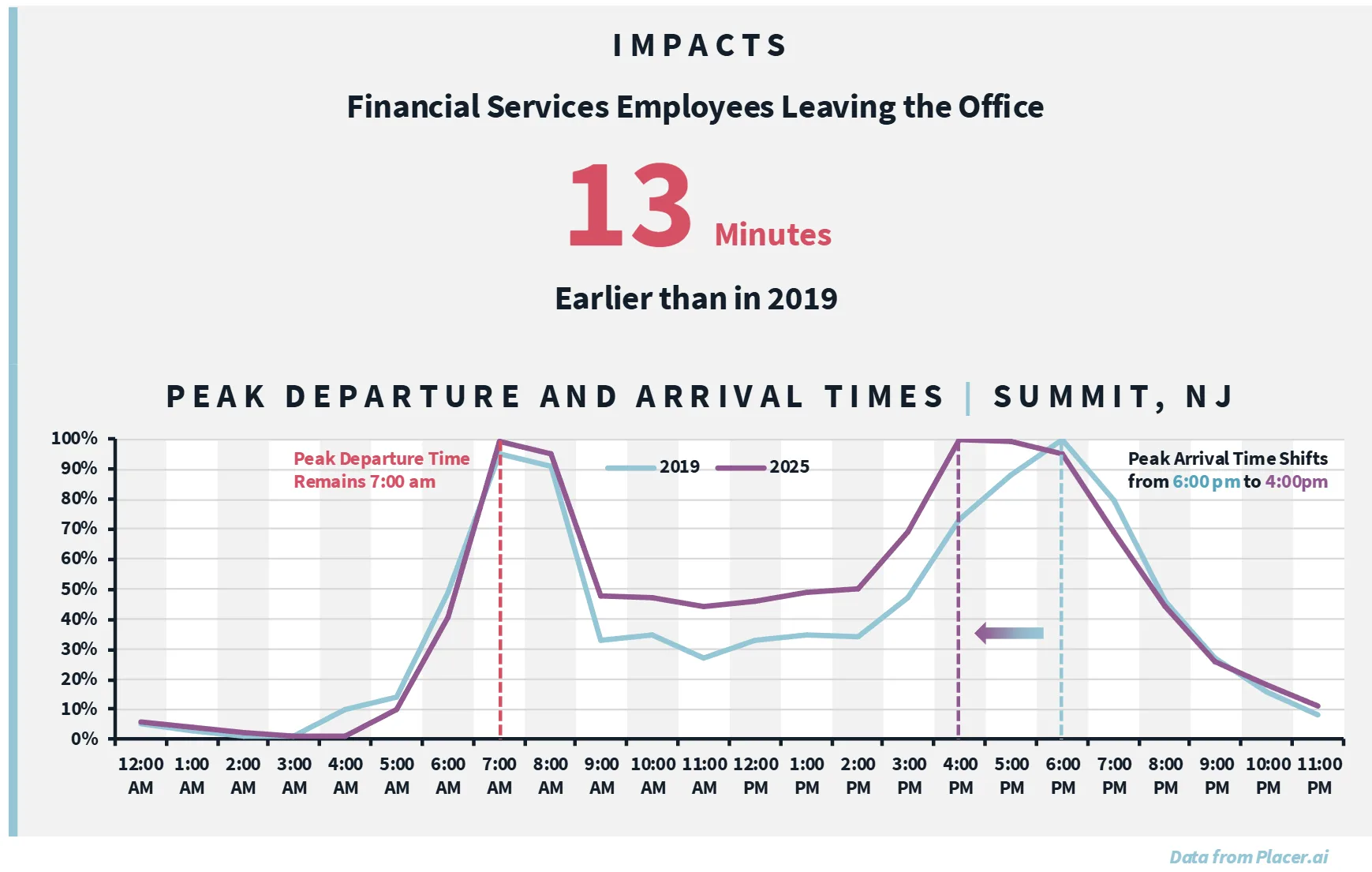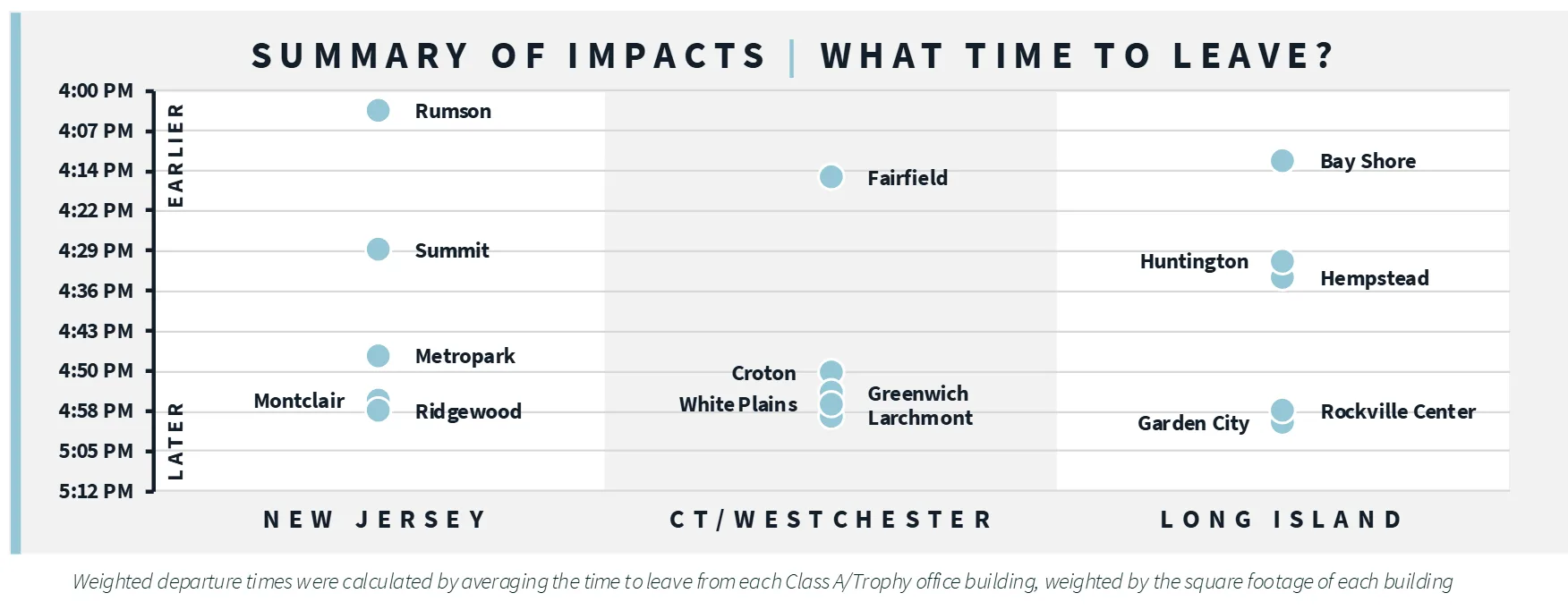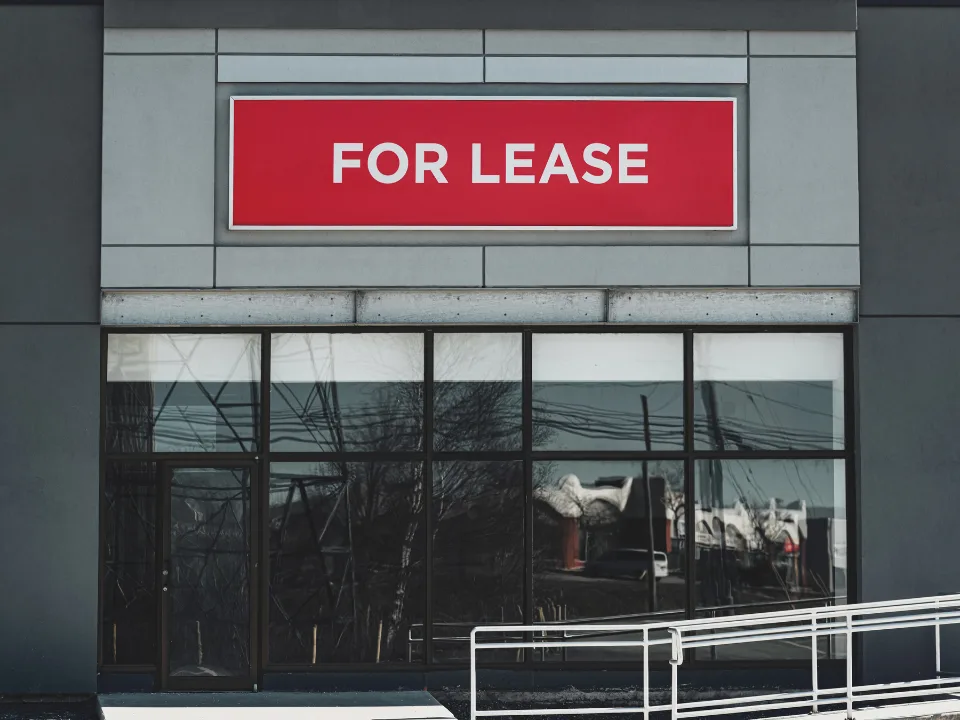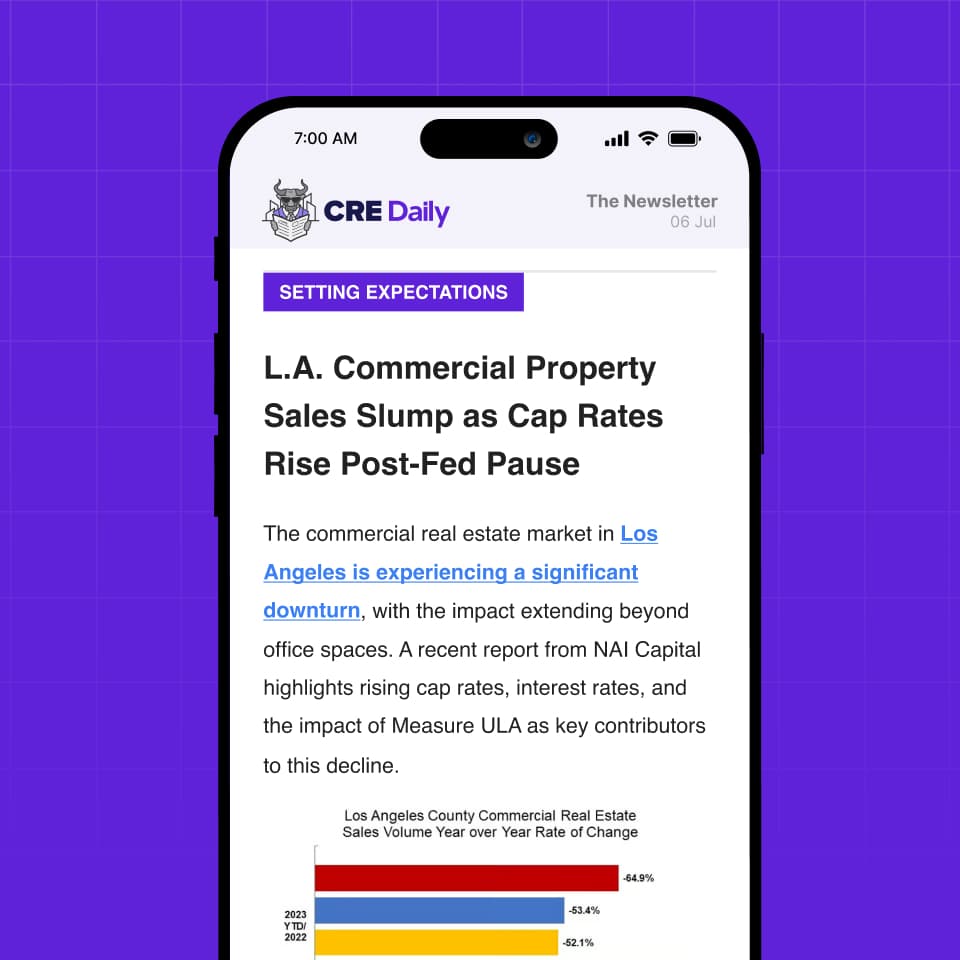- Suburban residency among Manhattan office workers has increased by 45,000 since the pandemic, with significant growth beyond traditional commuter zones.
- Return-to-office (RTO) mandates are accelerating, forcing suburban employees to reevaluate work-life balance—especially dual-income households.
- Peak office departure times have shifted significantly earlier, with 4:00 p.m. emerging as the new norm for many suburban commuters.
- Office proximity to major transit hubs is becoming a competitive advantage for companies prioritizing in-office presence.

A New Suburban Era—But With a Twist
According to a recent JLL study, hybrid work models that gained traction during the pandemic made suburban living more appealing. Between 2019 and 2025, the number of Manhattan office workers residing in suburban areas increased by 45,000—one-third of them settling beyond the traditional commuter belt in areas like Suffolk County, Long Island.
But this shift isn’t just about real estate—it’s a broader lifestyle transformation. High-earning, dual-income families are now balancing longer commutes, more rigid return-to-office mandates, and evolving responsibilities at home. Among the top 20% of earners, 76% now live in dual-income households, with many navigating the daily complexities of demanding jobs, childcare logistics, and extended train rides into the city.
Return to Office: More Than a Policy Shift
Office attendance is trending up. New York RTO rates have reached 88% of pre-pandemic levels, driven by tightening policies across industries. While financial services led the return early, tech and professional services are now following, citing concerns like:
- Slower development of junior staff
- Weakened collaboration and culture
- Perceived productivity gaps between remote and in-office teams
As flexibility fades, families that once thrived on hybrid schedules may struggle to maintain dual careers. Some could consider relocating closer to city centers—or exiting the workforce altogether—especially as commuting 4–5 days a week becomes the norm.
The Commute Conundrum: What Time Can You Really Leave
As office attendance climbs, employees are also clocking out earlier. Cell phone data reveals workers at major firms now leave, on average, 13 minutes earlier than in 2019. In some suburban commuter hubs like Summit, NJ, the peak departure time has shifted from 6:00 p.m. in 2019 to 4:00 p.m. in 2025.

Why the early exits? Logistics. To reach suburban towns by 5:45 p.m.—the standard daycare pickup deadline—many parents now leave Manhattan offices between 4:00 and 4:30 p.m., depending on where they live.

This dynamic is reshaping how companies evaluate office locations. Buildings near major transit hubs like Grand Central and Penn Station consistently outperform in both return rates and leasing activity, offering precious minutes back to employees navigating packed schedules.
A National Trend with Local Implications
New York isn’t alone. In markets like Chicago and San Francisco, the shift to earlier departures is even more pronounced. For corporate real estate strategists, understanding these regional patterns is crucial. Commute friction is now a key driver of market selection, talent retention, and even workplace design.
Get Smarter about what matters in CRE
Stay ahead of trends in commercial real estate with CRE Daily – the free newsletter delivering everything you need to start your day in just 5-minutes
Why It Matters
The suburban lifestyle once felt like a permanent shift. But the return-to-office push is bringing new complexities to the equation. In response, companies must rethink their office strategies—not just where they’re located, but how they’re used.
For companies reliant on suburban talent, transit access is no longer optional—it’s strategic. For firms drawing from more urban or younger demographics, downtown vibrancy may still be key. But in all cases, office design, culture, and policy must align with the lived reality of today’s workforce.
What’s Next
- Employers should evaluate office footprints based on employee residence patterns and family logistics.
- Flexible timing—not just location—may become a new form of workplace accommodation.
- Real estate strategy is increasingly central to workforce retention, especially as skilled labor becomes more scarce in the AI era.
In the end, commute time is no longer a side consideration. It’s a signal of how deeply work and life are intertwined—and a challenge that corporate real estate must help solve.


















